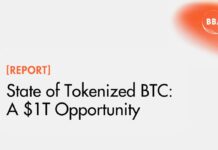The World Economic Forum published a paper about how better governance structures can realize the huge potential of the Blockchain and cryptocurrencies. The article, written by Don and Alex Tapscott, gives a thrilling overview of the governance of blockchains and the Internet and outlines how it can be improved.
The World Economic Forum (WEF), one of the most powerful lobby groups in the world, started to look at blockchains and cryptocurrencies some time ago. While earlier publications of the WEF mostly introduced to blockchain and outlined its potential, the recently published paper is dedicated to unleashing this potential. That it is huge, seems out of the question.
The big issue of the paper is the governance of the Blockchain and Cryptocurrencies. Without proper formal governance, all things are either uncoordinated or ruled by hidden entities which acquired informal power. To find out more about the governance of blockchain, the WEF tasked two authors to write a paper about it.
The authors of the paper are Don and Alex Tapscott. After having written an amazingly boring book about the “Blockchain Revolution”, the father and son duo mysteriously became the top global consultants for blockchain technology. In the paper for the WEF they again absurdly mischaracterize the blockchain by calling it “the heart of the fourth industrial revolution” and the enabler of random innovations like artificial intelligence, machine learning and more. Their ideas about the governance of technology, however, are quite interesting.
For most people involved in blockchain technology and cryptocurrencies, it is obvious that the industry needs some kind of governance, or, at least; better governance. But – how can you create it? And how can you be sure that the governance entities do not cause more harm than good?
Stewardship of the Internet as a Role Model
For the Tapscotts, the solution could be found in the governance structure of the Internet. They demand, “like the first era of the internet; this blockchain era should not be governed by nation states, state-based institutions or corporations. How we govern the internet of information as a global resource serves as a model for how to govern this new resource; through a multi-stakeholder approach using what we call ‘global governance networks.’”
The governance structure of the Internet can be helpful to learn. The paper explains that the Internet is not governed by hard and hierarchic rulers, but by networks of stewards, which cooperate to find consensus. The authors define several so-called steward networks, which connect several actors, like companies, nonprofits or governments, and enjoy an informal, industry-wide authority in certain tasks and areas.
Among these networks are the Internet Architecture Board (IAB), the Internet Engineering Task Force (IETF), the Internet Research Task Force (IRTF), the International Corporation for Assigned Names and Numbers (ICANN) or the Electronic Frontier Foundation. These networks shape the design of the internet. Not in a hierarchical, top-down way, but through cooperation, consensus and incentives.
Stewardship of Blockchain Technology
Blockchain technology, however, is different than the Internet. The Internet, as we know it, was about Information. The Blockchain is about “money, wealth, intellectual property and other forms of value for which many societies expect the government to protect the public interest.” Governments currently lack the knowledge to influence blockchains. But the authors have no doubt, that they will be able to do so in the future.
The big question is; how can this be done without killing the golden goose? How can you govern or take stewardship of the Blockchain, without letting heavy-handed government intervention kill innovation?
Like with the Internet, the Tapscott duo demand “self-organizing, bottom-up and multistakeholder governance.” Some kind of steward networks are already emerging.
We see “advocacy networks” like the Chamber of Digital Commerce (CDC), which opens a dialogue with US politicians in Washington. Also, we find “Watchdog networks” like the Blockchain Alliance, which is a partnership between law enforcement, trade groups and non-profits. Many companies in the Blockchain space joined trade organizations and non-profit groups, universities like the MIT founded academic initiatives like the Digital Currency Initiative and many other networks.
However, this seems to be not sufficient to steward the revolution. A short overview of some blockchain governance stories demonstrates that the industry is in need of better steward networks.
Bitcoin’s Governance Crisis
When talking about cryptocurrency governance, it is more or less impossible to not talk about the governance failure of Bitcoin. Most open-source projects like Wikipedia and Linux rely on meritocratic principles but “still have benevolent dictators like Jimmy Wales and Linus Torvalds.” Bitcoin has no dictators, but an open, somehow anarchistic environment, which has split the community into hostile camps and pervaded with informal power structures.
The war which emerged around the issue of scaling is “clearly hurting bitcoin. This is likely one of the factors in the looming ‘blockchain flippening’ where the upstart blockchain Ethereum is about to eclipse bitcoin in value,” the authors state.
In Bitcoin, there are several groups dedicated to protocol development. The Bitcoin Foundation once funded the development of Bitcoin Core before it nearly collapsed from mismanagement. Today, for example, the MIT Digital Currency Initiative supports the development of Bitcoin Core by employing some Core developers. Further, there are some companies employing Core developers, for example, Blockstream, bloq and ChainCodeLabs. In recent times, Chinese Mining producer Bitmain started to fund several independent development teams, like Parity Bitcoin or Rootstock.
These different camps in Bitcoin protocol development seem unable to find a consensus how to step forward and scale Bitcoin. A Twitter dialogue involving some Core developers shows a basic problem of Bitcoin protocol development – there seems to be nobody responsible for everything, because Bitcoin Core, as sometimes is said, is just a sum of individuals and does not exist by itself. At the same time, there seem to be strong informal power structures around Blockstream governing Bitcoin.
Some praise this stalemate, as it could strengthen Bitcoin’s immutability. But the Tapscotts do not believe this:
“In our decades of research in technology and innovation, deadlock has rarely been a positive, particularly when both sides are accusing the other of spreading falsehoods, censoring opinion and trolling.”
Governance in Ethereum and the DAO Fork
In Ethereum the governance structures are more clear than in Bitcoin. In the center of Ethereum’s governance is the Ethereum Foundation, “a non-profit consisting of 40 or so developers and researchers, was part of the plan.” According to Co-Founder Vitalik Buterin, the Foundation’s core tasks include research of future Ethereum protocol standards, development of some clients and community outreach.
This more formal power structure in Ethereum allowed, for example, the creation of the ERC-20 standard for tokens. This has become a powerful tool that made Ethereum a strong crowdfunding platforms with ICOs.
The Ethereum Foundation is sided by the Enterprise Ethereum Alliance (EEA), which was founded to enable the deployment of Ethereum within enterprise blockchains and to develop standards to make these chains compatible. The EEA consists of a large number of top organizations like Microsoft.
Still, in Ethereum there are several groups of stakeholders. For example miners, mining pools, token holders, developers and more. In the summer of 2016, these groups of stakeholders had furious discussions about the infamous DAO fork.
While the overwhelming majority of these stakeholder groups seemed to be in favour of the hard fork, the Ethereum foundation, after some time, took a position and acknowledged Ethereum Classic’s right to exist. Ethereum has been able not just to decide and execute a fork, but to accept the split of Ethereum Classic peacefully and sovereignly. A reason for this might be the presence of Vitalik Buterin, who is a very influential thought leader in Ethereum:
“He may not be the ultimate arbitrator as Linus Torvalds is over Linux, but Buterin certainly stewards the Ethereum ecosystem.”
Governance Challenges of Applications and the Ecosystem
Less controversial and toxic than the governance of the protocol layer is the stewardship of application and the ecosystem. However, in this areas are a lot of challenges, which need some kind of governance to be solved. For example, there is a need for skilled workers and talents. There are way too few people capable of building applications for Ethereum and other blockchains.
Also, a big challenge are the user interfaces. “Many of these apps are inaccessible to the average person. There’s not enough wallet support, and many interfaces are user unfriendly, requiring a high tolerance for alphanumeric code and geekspeak.” To enhance the user interface and to set standards for it, some kind of stewardess is needed.
Another, more general, problem of the ecosystem is the lack of legal clarity. Irrevocable transactions and unavoidable smart contracts are, legally, something new and unforeseen. It is what makes the magic of blockchain – but it is, at the same time, what creates a lot of problems for the industries. How can they comply with the regulation, without “stifling innovation by overreacting to worst cases – human trafficking, illicit drug trade, gun running, child pornography, terrorism, tax evasion and counterfeiting, for instance?” On the other side, “they must not twist new but unproven applications such as blockchain-based platforms for identity management to restrict civil liberties.”
What is needed is a regulatory framework, that is tailored to the needs of the blockchain ecosystem. The New York regulatory body tried to create this with the BitLicense. But it was to0 severe, which causes an exodus of some big Bitcoin companies from New York. The cost to comply with the license have been too large.
Such broader challenges – be it the user-interface, the education of new workers or the correct path of regulation – need the cooperation of stewards to be solved. But, the still hardly answered question remains; who are these steward groups? And how can they be improved?
The Stewards of the Blockchain and How their Networks can be Enhanced
The Tapscotts define several groups in Blockchain ecosystems and their role in stewarding; entrepreneurs and companies, venture capitalists, banks and financial services, coders and developers, academics and scholars, non-governmental organizations, governments and users.
While being in itself not heterogeneous, each of these groups has its own set of rules and goals. More important, there is a relatively low degree of internal structures in these groups. Only a few entrepreneurs have joined trade organizations, the developers have no formal oversight bodies like the ICANN, the IETF or W3C, but only a few informal rules and norms, and governments have single authorities dealing with virtual currencies, but no coordinated approach how to globally manage the challenge of cryptocurrencies and blockchains.
While steward groups are emerging, like what happened with the Internet, they currently lack structures and formal rules, to sufficiently address all the challenges broached by the blockchain revolution.
“For this technology to reach its next stage and fulfil its long-term promise, we still need coordination, organization and leadership.”
The authors quote Vint Cerf, who led the creation of the Internet Society and the Internet Engineering Task Force, suggesting that “a good starting point for blockchain would be to create a ‘birds of a feather’ interest group within the IETF.” They also note that the “W3C has made web payments a priority, and blockchain is central to that discussion,” and that the “IGF has hosted sessions about blockchain and bitcoin”. Blockchains could become part of those steward networks which already govern the Internet.
“We need all three pillars of modern civilization – the private sector, the public sector and civil society – to participate in stewarding this new global resource.”
The Tapscotts propose that “respected global network institutions,” like the World Economic Forum or the Internet Society, start to discuss blockchain governance and reach out to key actors. They also suggest breaking the “deadlock of bitcoin platform development” by the “creation of the Bitcoin Engineering Task Force (BETF) as a loosely self-organized, grassroots technical group comprised of the nine stakeholder groups.”
Also, they advocate the formation of more networks to educate policymakers. “The policy and advocacy work of the Chamber of Digital Commerce is exemplary, but the ecosystem needs more. We encourage organizations in every country to join the CDC and participate in its work.” Finally, they suggest to promote more blockchain courses in universities and to foster blockchain research around academic initiatives like the MIT’s.
That is maybe not enough to steward and handle a dragon like the Blockchain and cryptocurrencies. But it might be a starting point.

Btcmanager.com is author of this content, TheBitcoinNews.com is is not responsible for the content of external sites.
Our Social Networks: Facebook Instagram Pinterest Reddit Telegram Twitter Youtube










